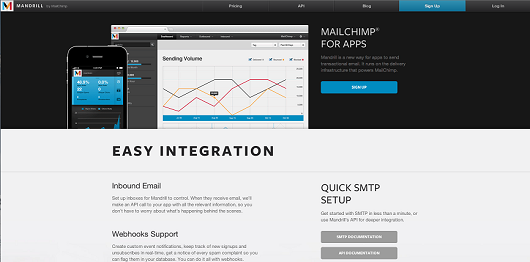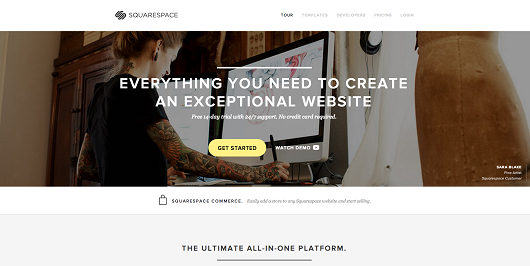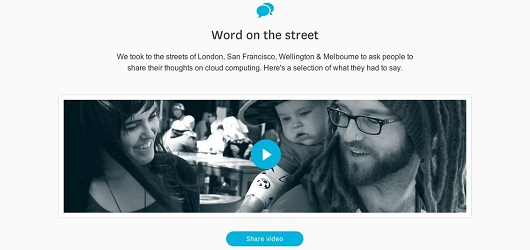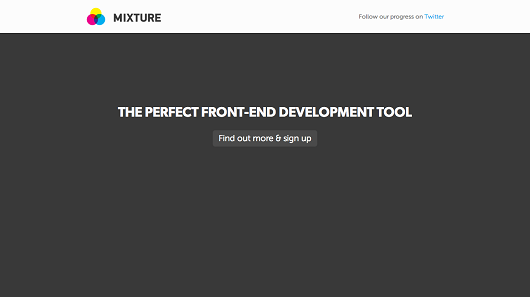5 Tips For Testing And Improving Your Landing Pages
Here are some tips to help you build solid landing pages, and ways to measure how well they’re working:
A landing page is often the first exposure internet users have to a company. An effective page provides the perfect hook for visitors to not only take an interest in the company, but to become involved as a customer. A functional landing page lacks all the distraction that comes with a typical web page: multiple calls to action and detailed information, and instead focuses on a single goal.
When a user completes that goal – whether it’s filling out a form, buying a product, or signing up for a subscription – that’s what is considered a conversion. A high conversion rate means your landing page is successful (since the point of a landing page is conversions). On the other hand, a high bounce rate means that visitors click away from your landing page without taking the intended action.
Several factors play into a successful landing page. The best way to find what works is to try, adjust, and test. Try different techniques, and always test them to measure the effectiveness of the changes you make.
1) Make content relevant
One main difference between a landing page and a website is that visitors travel to a landing page with a specific goal in mind. Users don’t usually just browse landing pages; they expect to see details about the specific offer that brought them there, like your banner ad.
This is why it’s important to make all the content on your landing page relevant to what visitors want. The message should be consistent with the ad’s message to prevent confusion and build trust in your brand. There should also be sufficient information about the company, offer, and purpose. Use appropriate copy to bridge the gap between what the user wants to know and what your company has to say, and clear calls-to-action to reveal the purpose of the page.

Mandrill’s landing page does an excellent job of including a lot of necessary and engaging content without drowning the user in text. Notice how you’re offered a brief preview of the software and a quick breakdown of the problem that it’s fixing.
2) Start users on the path you want them to follow
Assure your visitors that they’ve arrived at the right place by including keywords or phrases in your headline that match your ad. Once they’ve found your page, users want to get what they came for with the least amount of hassle, so minimize the number of clicks to get there. You should also limit the user’s options to make the purpose of your page clear, and the call-to-action easy to find.

Squarespace not only includes a clear and concise summary statement, but also offers a clear path forward with a simple call-to-action button.
3) Simplify content and design
In order to clear your landing page of distractions, you should simplify everything. Only include information and graphics that contribute to the goal you’re trying to achieve and the information users need.
You can do this by limiting copy and communicating with icons, which are simplified images that can often guide users more effectively than text can. Images instantly grab attention and convey meaning. You can take visual messaging even further by featuring a video that describes your offer.

Xero’s cloud computing guide does a great job of using customized icons, as well as video to communicate a relatively complex message really well.
4) Test your speed
To make improvements to your landing pages, you first need to know what should be changed. This is easily discovered by testing the performance of your pages. Google Adbots take site speed into account when rating a page’s search result relevance, so it’s important for your pages to load quickly. Not only does this improve your rating, but a fast site also builds your company’s reputation with users and increases conversion rates. To find out how fast your page is, use a site speed test and discover how speed can affect your page’s success.
With new minimalistic trends, designs are lending themselves to more efficient layouts and easily styled pages. When building your page, keep in mind that simple is better not only for your viewer’s sanity, but also for your site speed.
With an incredibly minimalistic design, Mixture not only pulls in the viewer into action through sheer simplicity, but also does takes advantage of a really lightweight site for better performance.
5) Measure your conversion and bounce rates
You should also test landing pages to see what the conversion and bounce rates are, so you can gauge their current success and decide what to change. Here is the formula to find the conversion rate:
Number of sales, leads, etc. achieved/Number of visitors = Conversion rate
To find the bounce rate, keep track of how many people visit the page, but leave without converting. Obviously, you want a high number of visitors to take action before clicking away.
Improving your landing pages takes continuous measuring, testing and adjusting. Keep these tips in mind when going through this process to optimize the success of your pages.

